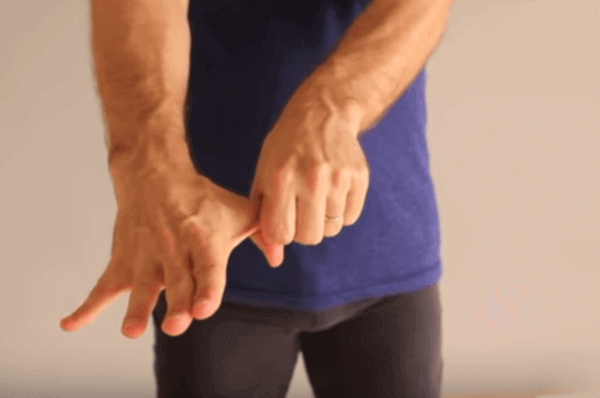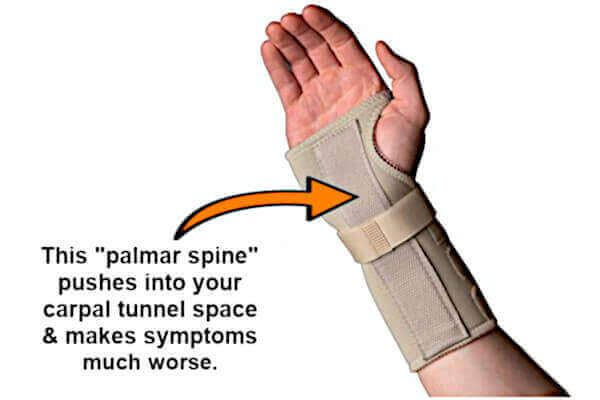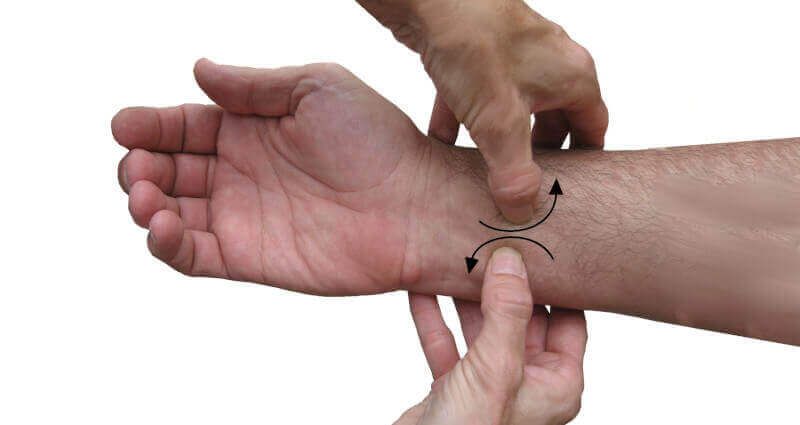1. Perform the stretching exercises below, in the sedquence given.
2. Perform them every 2-3 hours as you work with your hands. Since they take less than 60 seconds to complete, the exercises shouldn't impact your work schedule.
From Dr. Z - Carpal tunnel syndrome specialist
As a medical scientist, I've studied the details of dozens of carpal tunnel syndrome exercises. And patients usually claim this exercise or that exercise "works best" for them.
But what does "works best" really mean? In other words, what makes one exercise better than another? The answer has three key components because the best carpal tunnel syndrome exercises:
FIND OUT: do you have carpal tunnel? No strings attached self-test.
It took a great deal of time and trial-and-error to create an exercise regimen that has these three criteria. And I've prescribed it to thousands of patients.
The vast majority of them see major improvements in their carpal tunnel symptoms - even severe symptoms.
These carpal tunnel syndrome exercises are described below.
It's important to understand the following fact about carpal tunnel syndrome:
Either you're trying to PREVENT it or you're trying to TREAT it. Which do you want to do?
As you can imagine, carpal tunnel syndrome prevention is much easier than treatment. In fact, carpal tunnel syndrome stretches are the absolute best way to prevent this disorder. And the stretches below are precisely what you need.
In contrast, treating carpal tunnel syndrome is more difficult. And the difficulty increases with how intense your symptoms are. (Do you have symptoms? Check them here.)
The stretches below are crucial for treating any level of severity. But more severe symptoms require:
These additional interventions for severe symptoms are describes below. But you also need to perform the stretching exercises described below.
The exercise regimen I've developed performs two necessary biological functions. They're the key to eliminating carpal tunnel symptoms for good. Those functions are:
Loss of tendon lubrication and tendinous adhesions are the underlying cause of carpal tunnel syndrome. Lubricating tendons and reducing (or eliminating) adhesions will reduce the chances that the condition will arise or worsen.
Therefore, the best carpal tunnel syndrome fighter you can use is a stretching regimen that's performed:
Obviously, you prevent
carpal tunnel syndrome if you don't already have symptoms -- but you're at high risk for developing it. Such risk factors include:
If you want to prevent carpal tunnel syndrome from ever appearing, the exercises below are perfect. Most people only need to perform them every couple of hours during the day and they'll never experience this disorder.
In fact, every single day I advise at least a few patients, "Here's the best way to prevent carpal tunnel syndrome: exercises!"
That means if you do a few stretching exercises every couple hours, you'll never see carpal tunnel syndrome. These fast & simple exercises are therefore perfect for:

1. Perform the stretching exercises below, in the sedquence given.
2. Perform them every 2-3 hours as you work with your hands. Since they take less than 60 seconds to complete, the exercises shouldn't impact your work schedule.
If you already have symptoms, then these carpal tunnel syndrome exercises are necessary to treat the disorder. The exercises are identical to those needed for prevention. The difference is how much time you devote to the exercises.
Treatment is a bit more tricky than prevention. That means these exercises should be tailored to your symptoms severity.
For instance, mild carpal tunnel symptoms can be treated effectively by performing these stretching exercises every 1-2 hours. Exercises should also be combined with night bracing and massage (see below).
To treat more severe carpal tunnel symptoms effectively, the exercises should be performed at least every hour. And it's crucial that severe symptoms be treated with additional night bracing and massage (see below).

1. Perform the stretching exercises below, in the sedquence given.
2. Perform them ACCORDING TO YOUR SEVERITY.
Once again, there's a difference between prevention and treatment.

The forearm stretch is a crucial exercise. Your forearm tendons travel from the forearm to the fingertips. As they do, they travel through the carpal tunnel space in the wrist. Think of this as a "pinch point" or bottleneck.
It's from this point that tendons develop the adhesion and restrictions that cause carpal tunnel syndrome. When stretched, the tendons self-lubricate and shear off the harmful adhesions.
Start the exercise by placing your hands in the "praying position". Make sure your palms are pressed together tightly and close to your chest. Now raise both elbows slowly, keeping your palms together. Hold a few seconds and then drop your hands and shake them out. They'll feel warm, meaning blood is flowing throughout your hands.

Many carpal tunnel stretches neglect the wrist. Again, this is the "pinch point" for flexor tendons. This exercise targets the wrist directly, with the intent to shear off adhesions inside the carpal tunnel space.
To do this, interlace all of your fingers except for the thumbs. Rotate your wrists and push your palms out in front of you. Keep your elbow straight and hold this position for 5 seconds. Then drop your hands and shake them out.

Almost all carpal tunnel syndrome exercises neglect the thumb. Candidly, I don't know why. But the thumb is the digit most frequently affected by the pain and numbness of carpal tunnel syndrome. So don't forget to stretch your thumbs!
Start by grabbing one thumb and rotating it like a helicopter blade several times. Be gentle! Then switch direction.
When finished, pull the thumb back slowly and gently and hold that position for 5 seconds. Then repeat this important exercise on the other thumb.
Symptoms of more severe carpal tunnel syndrome cannot be treated with stretching exercises alone. Stretching exercises should be just one component of an integrated treatment regimen. The other components required for more severe symptoms ALSO include:

For treating this condition, and in addition to the above carpal tunnel syndrome exercises, you must brace your hand while you sleep. Bracing keeps you from hyper-bending your wrist, which worsens carpal tunnel symptoms by the morning.
In short, night bracing is a key component of carpal tunnel treatment.
But not just any brace will do. Most brace manufacturers claim they make a "carpal tunnel brace". But in fact, most common "pharmacy braces" are NOT designed for carpal tunnel syndrome.
Here's how you can tell: If the brace has a metal palmar spine, it's not a carpal tunnel brace. Why? When all human beings sleep, we unconsciously bend our hands backward. If there's a metal palmar spine at the wrist, it will push into your carpal tunnel space and exert pressure on your median nerve. This is VERY BAD for carpal tunnel syndrome.
Therefore, invest in a cerrtified carpal tunnel brace, which does't have the metal palmar spine.

Carpal tunnel syndrome exercises combined with night bracing is a powerful fighter of this disorder. But add myofascial release massage, and your carpal tunnel doesn’t stand a chance of bothering you.
Even severe symptoms can be wiped away with this 3-punch approach to treatment.
Remember those pesky adhesions on tendons that cause carpal tunnel syndrome? Myofascial release massage specifically targets them for removal. And it’s why therapists use this technique routinely on their carpal tunnel patients.
This massage is not easy to do on yourself, so you’ll need a partner. Have them dig their thumbs into your wrist joint as in the photo. Then make circular rotating motions in opposing directions. Move those rotations up and down the forearm for a couple inches, then left to right. This must be performed for 10-15 minutes in the mornings and evenings.
The massage’s “kneading” motion rips apart any restrictions on the tendons. Adhesions are torn from their foundations and carried away by lymphatic drainage.
Freeing up tendons from adhesions will reduce inflammation and restore blood flow to even the most severe carpal tunnel syndrome cases.
These carpal tunnel syndrome exercises are used for both prevention and treatment of this disorder. The difference is that prevention requires less attention and time. But treating carpal tunnel syndrome is different. It requires using these exercises for longer periods of time as well as more vigorously (depending on the severity of your symptoms).